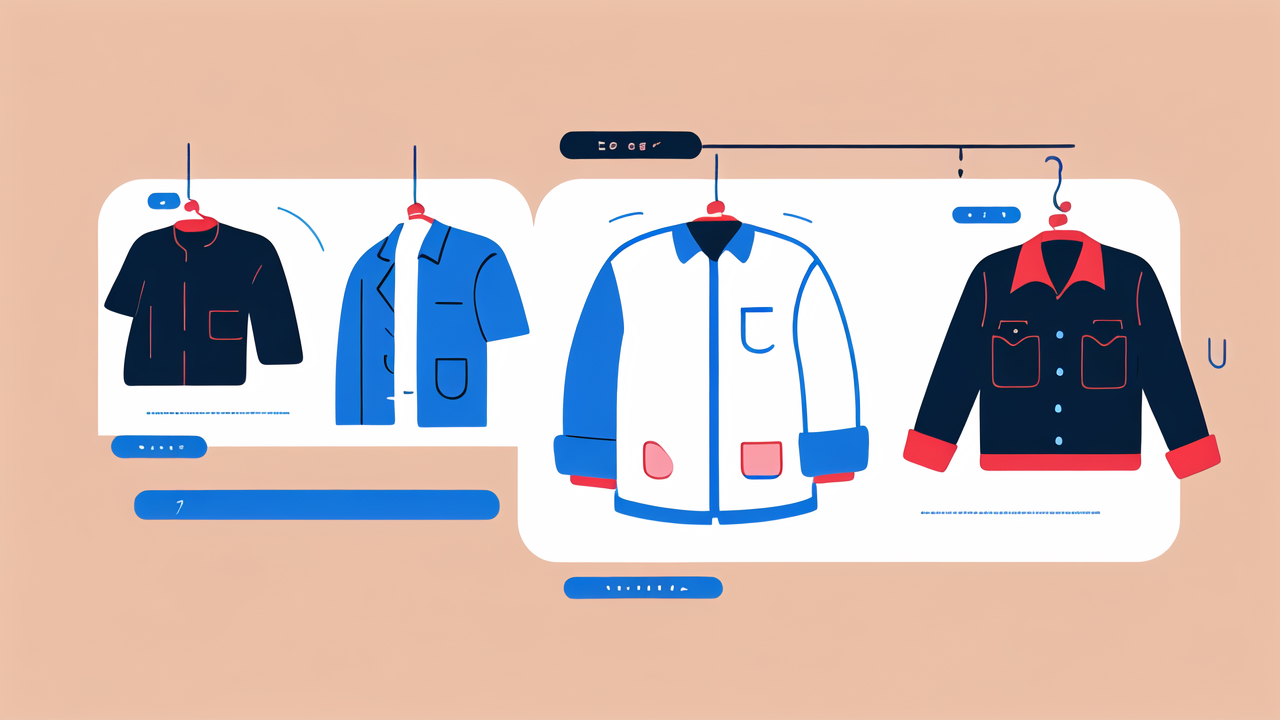Understanding the Market for Smart Fashion in the United States
The Evolution of Wearable Technology
Wearable tech has come a long way in recent years. It started with simple fitness trackers and smartwatches. Now, it's moving into our clothes. Smart clothing blends tech with fashion in new ways. These garments can track health data, adjust to body temp, and even change color. The US market has seen steady growth in this sector. Consumers are eager for clothes that do more than just look good. They want function and style in one package. This shift is driving innovation in the textile and tech industries.

Consumer Demand for Smart Clothing
Americans are showing growing interest in smart clothing. They seek outfits that enhance their daily lives. Fitness enthusiasts love gear that tracks workouts and vital signs. Business professionals want clothes that stay wrinkle-free and fresh all day. Parents are drawn to kids' wear with built-in GPS for safety. The demand spans various age groups and lifestyles. Consumers are willing to pay more for these high-tech features. They see value in clothes that offer both style and functionality. This trend is pushing brands to create more innovative products.
The Role of Innovation in Smart Fashion
Innovation is the driving force behind smart fashion. Companies are investing heavily in R&D to create new technologies. They're developing fabrics that can conduct electricity and store data. Some are working on clothes that can charge your phone as you wear them. Others are creating garments that adapt to weather changes. These innovations are not just about adding tech to clothes. They're about reimagining what clothing can do for us. The goal is to make our lives easier, healthier, and more connected through what we wear.
Key Players and Innovations in the US Smart Clothing Industry
Leading Brands in Smart Fashion
Several brands are making waves in the US smart fashion market. Under Armour offers sports gear with built-in sensors for performance tracking. Levi's has partnered with Google to create jackets with touch-sensitive cuffs. Ralph Lauren has developed shirts that monitor heart rate and breathing. Fila has also entered the smart clothing arena with innovative sportswear. These brands are pushing the boundaries of what clothes can do. They're setting new standards for functionality in fashion. Their products are helping to mainstream smart clothing in the US market.

Cutting-edge Technologies Employed by Smart Clothing
Smart clothing uses a range of advanced technologies. Conductive fabrics allow for seamless integration of electronics. Microprocessors and sensors are woven into the fabric itself. Some clothes use thermochromic dyes that change color with temperature. Others employ shape memory alloys that alter the garment's form. E-textiles can generate and store electricity from body movement. Nano-coatings make fabrics water-resistant and self-cleaning. These technologies are making clothes more responsive and adaptive to our needs.
Collaborations and Partnerships in the Industry
Collaboration is key in the smart fashion industry. Tech companies are teaming up with fashion brands to create innovative products. Google's Project Jacquard works with various clothing makers. Apple partners with fitness brands for Apple Watch integration. Universities are also playing a role, researching new materials and technologies. These partnerships blend expertise from different fields. They're crucial for overcoming technical challenges and creating marketable products. Such collaborations are accelerating the growth of smart fashion in the US.
Future Outlook and Opportunities in Smart Fashion
Predicting Market Growth and Consumer Trends
The smart clothing market in the US is set for significant growth. Analysts predict a compound annual growth rate of over 25% in the coming years. Consumers are expected to embrace smart fashion more widely. We'll likely see more everyday clothing with built-in tech features. Health monitoring clothes will become more sophisticated and accurate. Fashion-forward consumers will seek garments that change appearance on demand. The line between tech gadgets and clothing will continue to blur. This growth presents huge opportunities for both established brands and new entrants.

Challenges and Considerations for Smart Clothing Brands
Despite the promising outlook, smart clothing faces some challenges. Durability is a major concern. Smart clothes need to withstand washing and daily wear. Privacy is another issue. Brands must ensure data collected by smart clothes is secure. Cost is also a factor. Smart clothing is often more expensive than regular clothes. There's a need to make these products more affordable for mass adoption. Sustainability is becoming increasingly important to consumers. Brands must consider the environmental impact of their smart clothing production and disposal.
Opportunities for Startups and Established Brands in the Smart Fashion Sector
The smart fashion sector offers numerous opportunities for businesses. Startups can focus on niche markets, like smart workwear or adaptive clothing for seniors. They can develop new materials or innovative manufacturing processes. Established brands can leverage their customer base to introduce smart versions of popular products. There's room for customization services, allowing users to add smart features to existing clothes. The healthcare sector presents opportunities for clothes that monitor patients remotely. As the technology improves, we'll see more creative applications of smart clothing in various industries.




Leave a comment
This site is protected by hCaptcha and the hCaptcha Privacy Policy and Terms of Service apply.